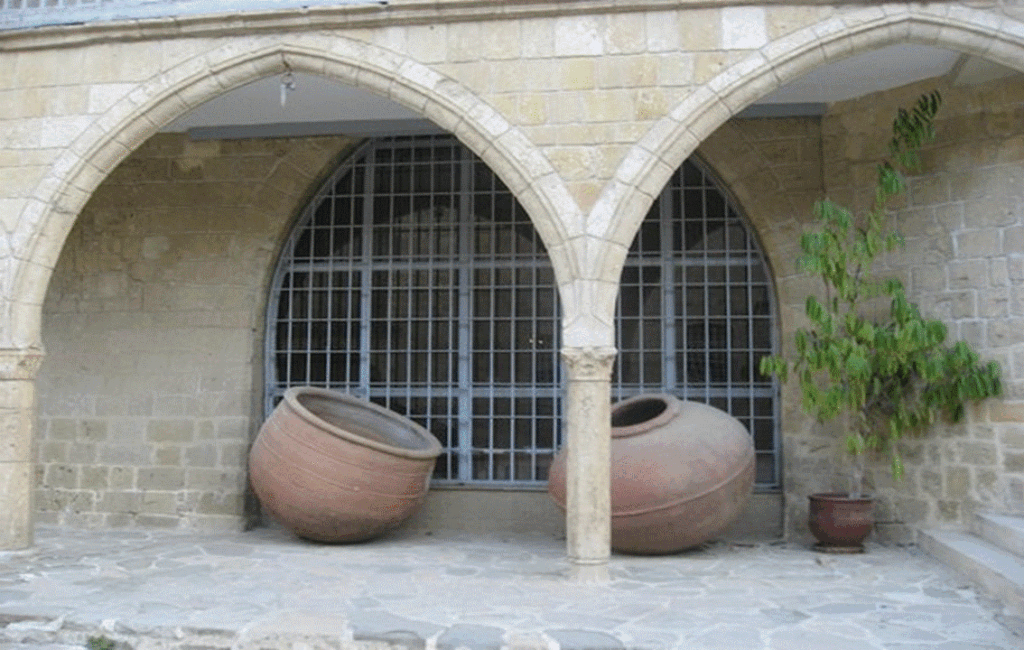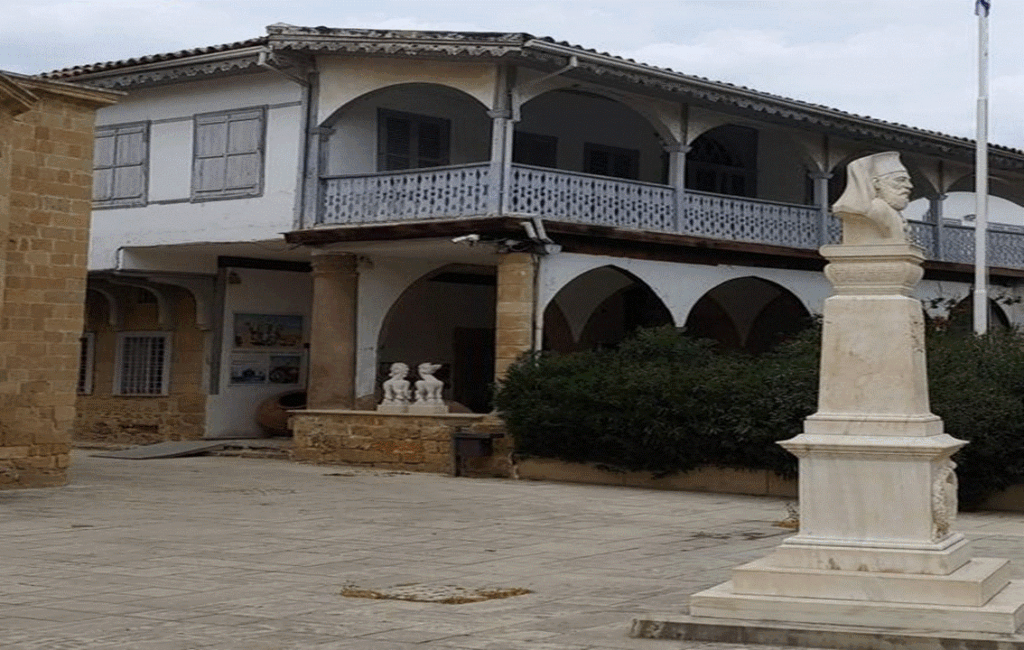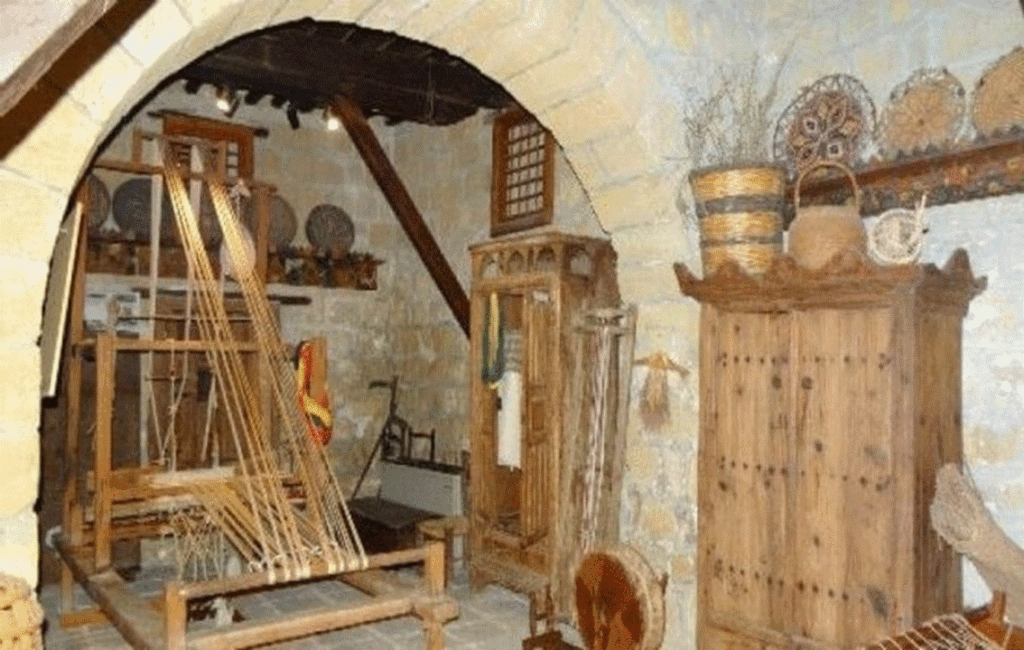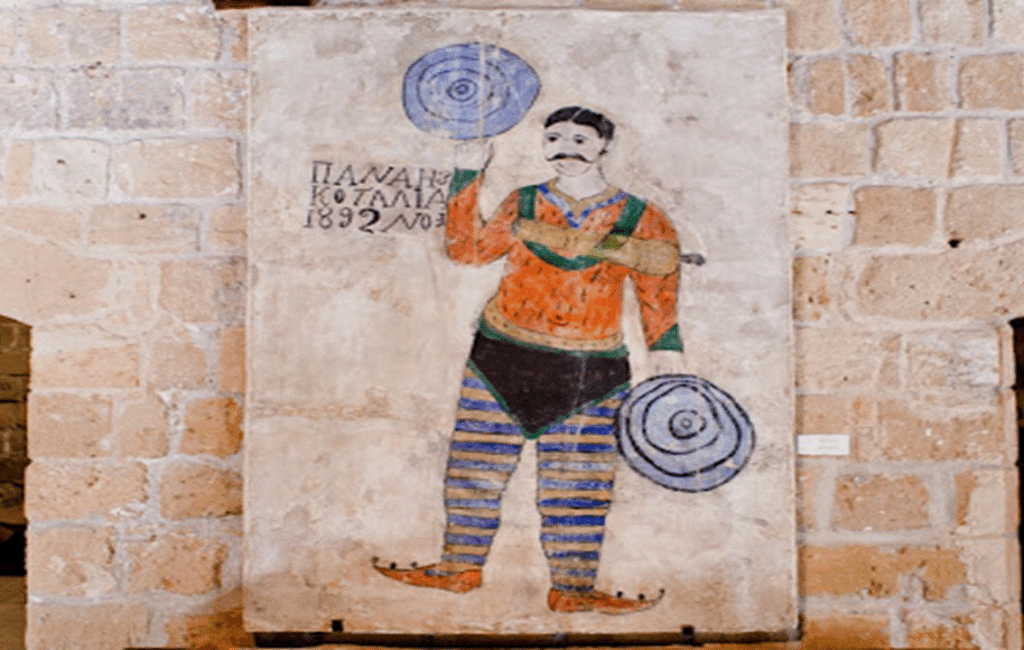A PRESERVATION OF CYPRIOT ARTS & CRAFTS

FOUNDED IN 1937
The Society of Cypriot Studies founded the Cyprus Folk Art Museum in 1937. Its main function was to preserve and promote the traditional arts and crafts of Cyprus. Since then, its collection of exhibits has grown immensely and today it remains as one of the oldest museums on the island. The museum currently houses over 5,000 exhibits and these display a wide range of artefacts. The treasure trove on display includes ancient pottery, textiles, woodcarvings and metalworks. These objects offer a glimpse into the rich history and traditions of the island and the museum acts as a testament to the creativity and craftsmanship of the Cypriot people of old.
FRENCH BENEDICTINE MONKS
The old Archishopric building that houses the museum has an interesting and varied history of its own. Its stark Gothic architecture dates back to the 13th century when it was originally built as a monastery to house French Benedictine monks. Several Latin religious orders arrived shortly after the island’s new Lusignan rulers took control.
THE ORDER OF SAINT JOHN HOSPITALLERS
A church was later added to the site by the order of Saint John Hospitallers. They dedicated their new place of worship to their patron saint of Saint John. Hugo the 1st, a Lusignan king of Cyprus, is also buried within its grounds.


THE GREEK ORTHODOX CHURCH
The Greek Orthodox Church took ownership of the site during the Byzantine era. The square where the old Archbishopric is situated is named after Archbishop Kyprianos. Hanged by the Ottoman Turks, he met his gruesome end at the start of the wider Greek revolution against Ottoman rule which started in 1821.
A NEW MUSEUM
In 1961 the seat of the Archbishop of Cyprus moved to a new palace. The Archbishop of the time donated the site to the the curators of the Cyprus Folk Art Museum and the Society of Cypriot Studies. During their renovations, a 16th-century fresco depicting the Annunciation was uncovered and this is now conserved by the Society and the Department of Antiquities. The Cyprus Folk Art Museum opened on the site in 1964.
EXHIBITS THAT DATE BACK OVER 100 YEARS
The museum’s collection is vast and diverse. Thousands of objects on display provide valuable insight into the artistic and cultural practices of early Cypriot civilisations. The exhibits on display include several intricate examples of Cypriot workmanship. These include examples of pottery, basket weaving, embroidery and lace needlework, leatherwork, metalwork, carpentry with intricate woodcarvings, paintings, and various antiquated tools. Its collection of pottery includes pieces dating back to the Neolithic period and the myriad of textiles offer a glimpse into the unique craftsmanship and skill of Cypriot weavers and needleworkers. The woodcarvings on display are a testament to the rich tradition of carpentry on the island and feature the talent and creativity of Cypriot hand carpentry of old. The broad range of metalwork includes jewellery, weapons, and normal household items, highlighting the skill and artistry of Cypriot blacksmiths and metalworkers.


CYPRIOT PAINTINGS
Much of the museum’s collection dates back over 100 years and one such exhibit is the original door of the church of Saint Mamas, situated in the occupied North of of the island. The museum also features a varied collection of paintings created by Cypriot artists of their day. One such painting depicts Athanasios Diakos, a hero of the Greek revolution of 1821. Another notable work is a depiction of Panagiotis Koutalianos, who was an athlete famous for his awesome strength and power. In 1996 a new exhibition on the ground floor of the main building opened to the public after extensive renovations. This was followed by the inauguration of the Silk Industry Exhibition on the first floor in 1999.
EDUCATION & OUTREACH PROGRAMS
The museum uses educational programs to ensure that future generations continue to appreciate and celebrate Cypriot heritage that has existed on the island for centuries. The museum constantly implements a number of varied outreach programs. These are designed to engage people of all ages. Curators regularly stage educational workshops, lectures, guided tours, and new exhibitions. All events conducted in collaboration with local schools, community groups, and several overseas institutions.
LOCAL TALENT
The museum also hosts temporary exhibitions, featuring the work of local contemporary artists and craftspeople. These exhibitions provide a platform for local artisans to feature their modern talents, as well as promoting traditional Cypriot arts and crafts to a wider audience.


A GIFT SHOP A& CAFETERIA
The museum gift shop sells traditional handicrafts and small gifts inspired by tradition. Small souvenirs such as woven bookmarks, key rings, figurines, jewellery and subjective books can be obtained during a visit. The cafeteria serves a number of snacks and hot and cold beverages, offering visitors a relaxing break.
REWARDING & ENLIGHTENING
Today, the Cyprus Folk Art Museum offers visitors a unique opportunity to explore the rich history and traditions of Cyprus. Every visit is a journey through time and a celebration of the enduring beauty and creativity of Cypriot arts and crafts. Serving both lovers of history and art the museum also fulfills visitors that are curious about Cypriot crafts and the cultural heritage of the Cypriot people through the ages. A visit to the museum can be a rewarding and enlightening experience, providing a fascinating glimpse into the history and traditions of Cyprus. The museum continues to play a vital role in the preservation of Cypriot history whilst helping to promote the importance of traditional Cypriot arts and crafts.


The Cypriot Folk Art Museum
Archbishopric Palace
Archbishop Kyprianos Square, Nicosia 1016
Hours of operation:
Tuesday to Friday: 9.30am to 4.00pm
Saturday: 9.00am to 1.00pm
Closed on Sunday and Monday and during Public Holidays
A minimal entrance fee is charged
Tel: 22 432 578


